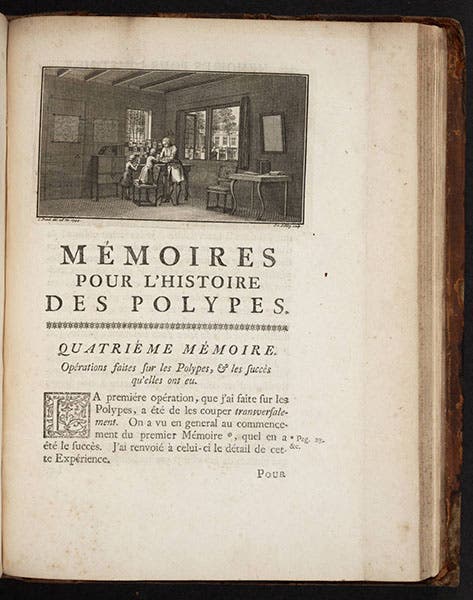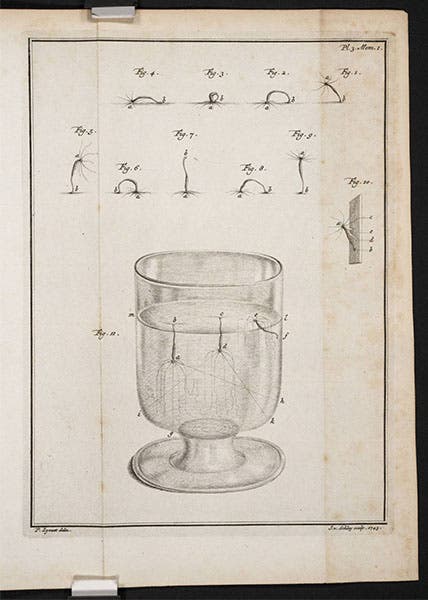Scientist of the Day - Abraham Trembley
Abraham Trembley, a Swiss naturalist, was born Sep. 3, 1710 (see third image above). In 1740, Trembley discovered a small freshwater organism, which he called a polyp, that he thought was new to science (in fact Leeuwenhoek had discovered it nearly 40 years before). Experimenting with his tiny tentacled beastie (which we now call a hydra), Trembley cut the organism in half, and discovered to his amazement that both halves could regenerate, producing two fully functional hydra from the incomplete pieces. Most scientists who did not see this with their own eyes would not believe it. So Trembley did a very clever thing. He found ways to keep the delicate organisms alive during long carriage rides, and he sent living specimens to the leading naturalists of Paris and London, with instructions on how to conduct the experiments. Trembley's experiments were re-performed before the French Academy of Sciences and the Royal Society of London, and the hydra regenerated just as Trembley had promised. By thus using what one scholar has called this “strategy of generosity," Trembley converted what might have been fierce critics into supporters. By the time his book came out, Mémoires pour servir ą l'histoire d'un genre de polypes d'eau douce (Memoirs on the natural history of a kind of freshwater polyp, 1744), he no longer had to battle skeptics, and Trembley was proclaimed everywhere as a master investigator of nature.
We have Trembley’s Memoires in our History of Science collection. The first two images above, showing a jar of hydra, and a single organism, are from this book. Trembley also incorporated small engraved scenes as headpieces to the separate memoirs in the book; one shows hydra being fished from a pond, and the other depicts Trembley in his lab, showing his specimens to some children (fourth and fifth images).


William B. Ashworth, Jr., Consultant for the History of Science, Linda Hall Library and Associate Professor emeritus, Department of History, University of Missouri-Kansas City. Comments or corrections are welcome; please direct to ashworthw@umkc.edu.







![Using an astrolabe to measure the depth of a well, woodcut in Elucidatio fabricae vsusq[ue] astrolabii, by Johannes Stöffler, 1513 (Linda Hall Library)](https://assets-us-01.kc-usercontent.com:443/9dd25524-761a-000d-d79f-86a5086d4774/a998eb50-55d2-4a88-ace2-a50aa5fa86e7/Stoffler%201.jpg?w=210&h=210&auto=format&fit=crop)

